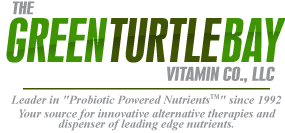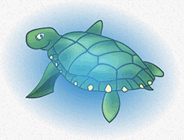The Okinawan Diet for a long life
Okinawans have the longest disability-free life expectancy in the world
There is now a best selling book called The Okinawa Program, by researchers Bradley and Craig Willcox and Makoto Suzuki. Okinawa is one of the Ryukyu Islands south of Japan; in 1945 it was the site of one of World War II’s bloodiest battles as U.S. forces pushed toward the Japanese mainland. Though the island was returned to Japan in the early 1970s, the U.S. still maintains large military bases there.
Since 1976 the Japanese Ministry of Health has been studying older Okinawans (who live in traditional cultures presumably unaffected by the American presence), hoping to unlock the secrets of their amazing good health. What’s most interesting about them is that they have the longest disability-free life expectancy in the world. Okinawa boasts the highest % of centenarians anywhere. Heart disease rates are low: 80% fewer heart attacks than Americans, and Okinawans who have heart attacks are more likely to survive. Breast and prostate cancer are so rate as to be unheard of among the older population. Obesity is equally rare. Smoking, the reader is let to conclude, is also rare among older Okinawans, though the books cites no statistic.
Five-a-day is only a start
The Okinawan diet might well amaze Americans. The average citizen consumes at least seven servings of vegetables daily, and an equal number of grains (in the form of noodles, bread, and rice—many of them whole grains). Add to these two t four servings of fruit, plus tofu and other forms of soy, green tea, seaweed and fish rich in omega-3s (three times weekly). Sweet potatoes, bean sprouts, onions, and green peppers are prominent in the diet. Vegetables, grains, and fruits make up 72% of the diet by weight. Soy and seaweed provide another 14%. Meant, poultry, and eggs account for just 3% of the diet, fish about 11%. The emphasis is on dark green vegetables rich in calcium (Okinawans, like other Japanese, don’t eat much dairy). Okinawans do drink alcohol, but women usually stick to one drink a day, while men average twice that. Moderation is the key.
In short, the average Okinawan’s diet is far richer in complex carbohydrates and plant-based foods, and lower in fat, than the average American’s (It’s completely different from low-carbohydrate plans like the Atkins and Zone diets.)
Sweet potatoes, not couch potatoes
These people are far from sedentary. Most proactive martial arts and traditional Okinawan dance. They garden, they walk. Even at age 100, they look lean and healthy. (For photographs and other information, visit the websitewww.okinawaprogram.com) Furthermore, they live comfortably and share the same spiritual and religious values, and the status of women is high. The healthcare system is good and covers everybody.
The book includes a number of recipes designed to help Americans ease into Okinawan eating habits. It’s not so easy, of course, to change to an Okinawan life-style and consume, say, 20 servings of vegetables, fruits, and grains daily. But this book can point you in the right direction.
Surprise: vitamin and mineral content of vegetables has dropped drastically. When Alex Jack compared recently published US Dept. of Agriculture nutrient values with an old `963 USDA handbook For example, collards have 62% less vitamin C and 84% less magnesium. Organic Gardening magazine asked the USDA for an explanation. They were told that the nutrient drain should be put in context. The 78% decrease in calcium content of corn is not significant because no one eats corn for calcium. The nutritional content of produce is not as important as things like appearance and big yield. So take your supplements! The National Academy of Sciences has issued an alert that it takes twice as many vegetables to get the daily requirement of vitamin A as previously thought. Modern farming methods may produce a large yield from an acre, but there is only so much nutrition that can be extracted from the soil. Maybe that organic produce is a bargain when you consider the nutrient content.




